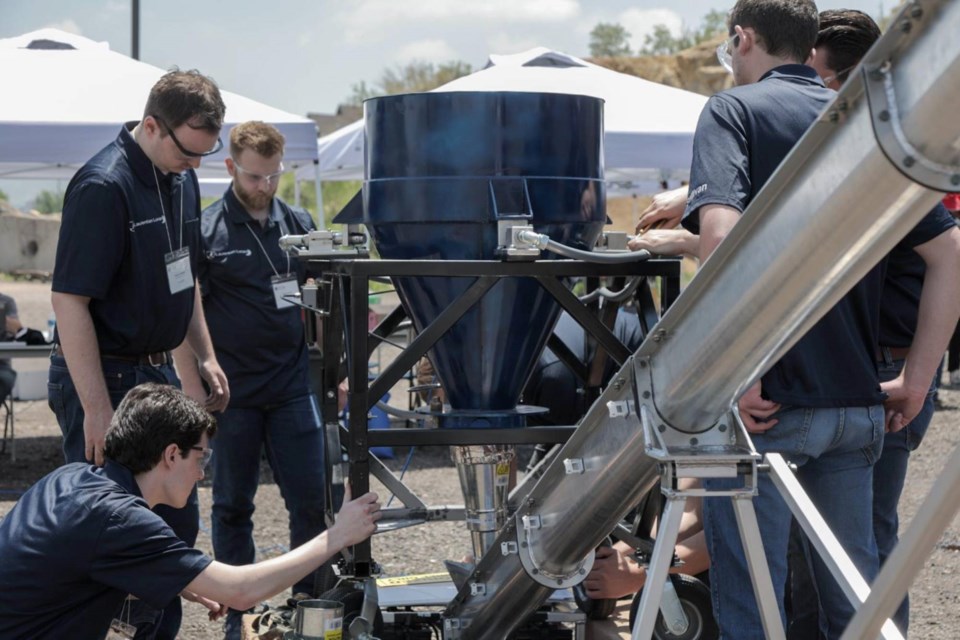A group of Sudbury engineering students has won first place in an international competition that challenged them to design the best machine prototype to move dirt on the moon.
Dubbed the “Laurentian Lunars,” the team earned the top spot over competitors from the U.S., Germany, Poland, and Australia during the Over the Dusty Moon Challenge, hosted June 2-3 in Golden, CO, by the Colorado School of Mines.
Teams had to produce a prototype that could effectively transport lunar regolith — sand or fine aggregate — across the moon’s surface.
Designs were judged on the amount of regolith simulant transported, system mass, energy consumed, dust tolerance and generation, autonomy, and overall performance.
“We had a fantastic event with five teams from around the world running their systems over two days on the Mines campus,” said Kevin Cannon, assistant professor of geology and geological engineering who is on faculty in Colorado School of Mines’ Space Resources program, in a news release.
“The winning team, Laurentian Lunars from Canada, had a flawless run and delivered all the required regolith in just over 10 minutes.”
The team included Laurentian University students Ethan Murphy, Adam Farrow, Alexander MacKenzie, Christian (Quade) Howald, Goran Hinic, Kevan Sullivan, Kyle Wulle, and Reid Ludgate.
Designing the prototype was a capstone project, which is a requirement for mechanical engineering students, according to competitor Ethan Murphy, who called it an “incredible opportunity.”
“It’s no secret that Sudbury’s a mining hub, and I think that the focus [that] Laurentian puts on their engineering programs, specifically in mining, sets them apart from other institutions…,” he said.
“Laurentian has a pretty well established history of succeeding in competitions like this, and that’s not only because of where we’re from, but also because of the support that our professors are able to provide.”
Team representatives will now present their design at the Space Resources Roundtable, taking place in Colorado this Thursday, June 9.




